
Supercharge your lead generation with a FREE Google Ads audit - no strings attached! See how you can generate more and higher quality leads
Get My Free Google Ads AuditFree consultation

No commitment
Supercharge your lead generation with a FREE Google Ads audit - no strings attached! See how you can generate more and higher quality leads
Get My Free Google Ads AuditFree consultation

No commitment
In the ever-evolving landscape of digital marketing, solar energy contractors face unique challenges in capturing the attention of potential clients. One common barrier is high demo interest going unconverted due to a lack of follow-up mechanisms. As the demand for renewable energy solutions grows, leveraging Google Ads can be a game-changer in reaching high-intent prospects at the precise moment they are searching for solar solutions. Advanced tools now allow businesses to retarget these potential leads and reignite their interest by reminding them of the value offered. Moreover, delayed or manual follow-ups can mean hot leads cooling off before sales can engage; however, modern platforms flag visitors early on, aiding in layering intent-based audience segments into campaigns. This guide provides a comprehensive framework for using Google Ads to generate leads and grow your solar energy business.
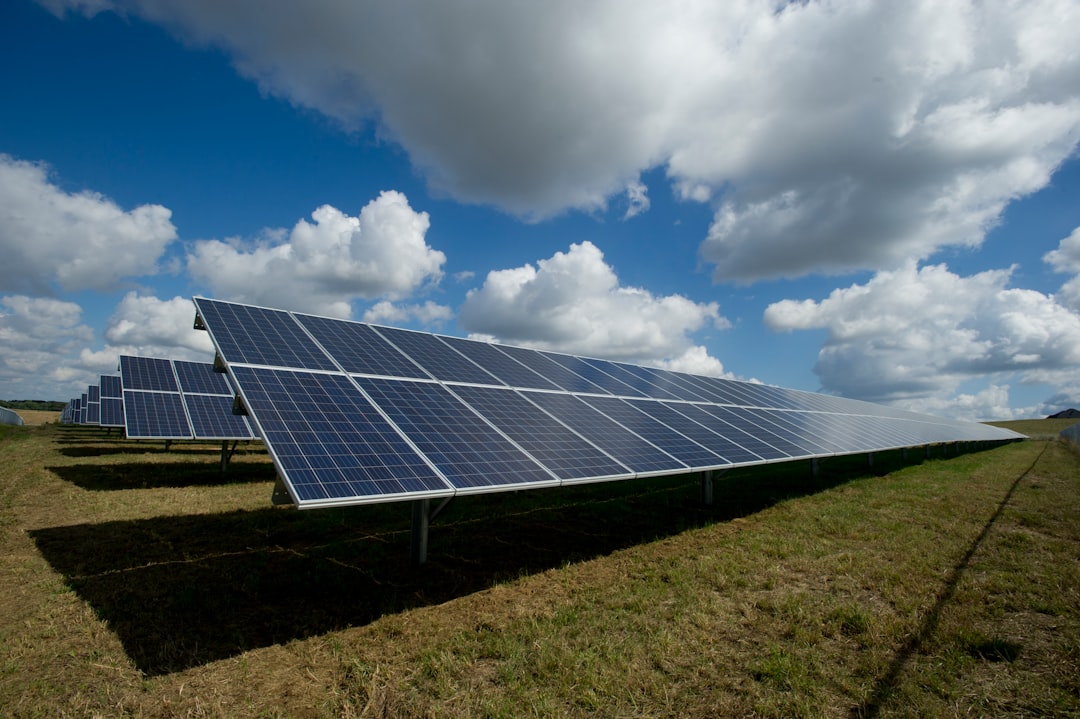
Solar energy contractors face unique challenges in reaching homeowners and businesses ready to invest in renewable solutions. Google Ads provides a direct path to high-intent buyers, but real value comes from precision, agility, and actionable data. Leveraging technology that unifies marketing and sales insights—such as Sona Identification—allows teams to act on real customer intent, prioritize the most lucrative accounts, and maximize every advertising dollar.
Ready to unlock high-intent solar leads and maximize your ad performance? Get started for free with Sona.
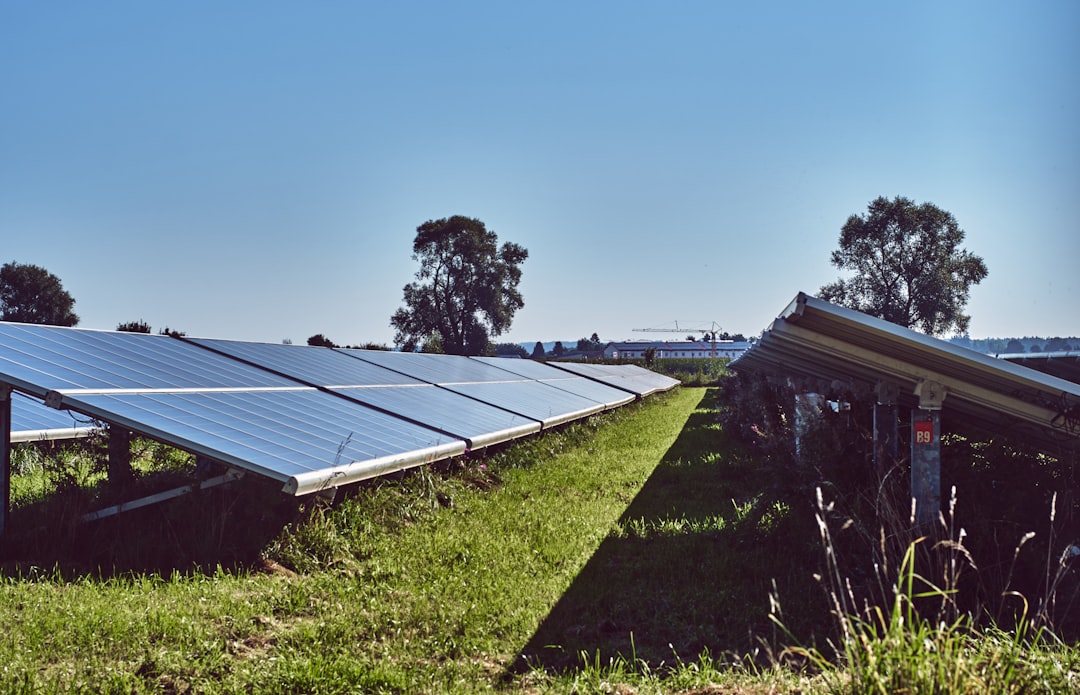
Solar energy contractors benefit from an environment where timing and precision directly impact lead quality and revenue. Google Ads deliver tailored visibility at the exact moment prospects are searching for solar solutions, driving higher conversion rates and shortening the sales cycle. For actionable strategies to improve solar lead generation, explore best practices for Google Ads in solar.
Traditional outreach often suffers from delays and generic targeting, resulting in missed opportunities and wasted marketing spend. With Google Ads, solar contractors tap into real-time search intent, catching motivated buyers early and guiding them efficiently through the funnel. For additional insights on digital marketing in solar, visit our marketing analytics blog.
By leveraging advanced audience data, solar energy businesses can move beyond anonymous clicks to pinpoint which companies and decision-makers are engaging with their ads. This level of insight empowers marketing teams to dynamically adjust bids and creative in response to shifting market demand, ensuring resources are focused on high-value leads.
Contractors who unify their CRM and ad platform data gain the advantage of seamless audience updates as leads progress. This approach keeps campaigns relevant and helps teams measure true ROI by attributing both online and offline conversions. The result is a more agile, data-driven digital marketing strategy that consistently produces qualified solar leads and maximizes advertising impact. Ready to optimize your campaigns? Get started for free with Sona.
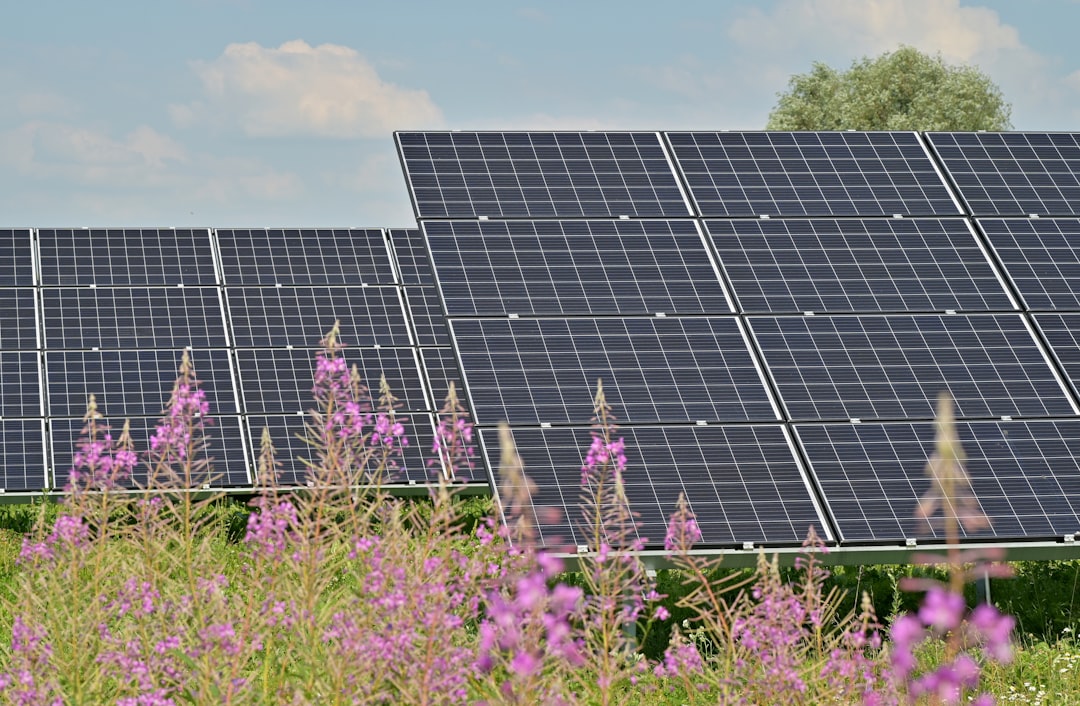
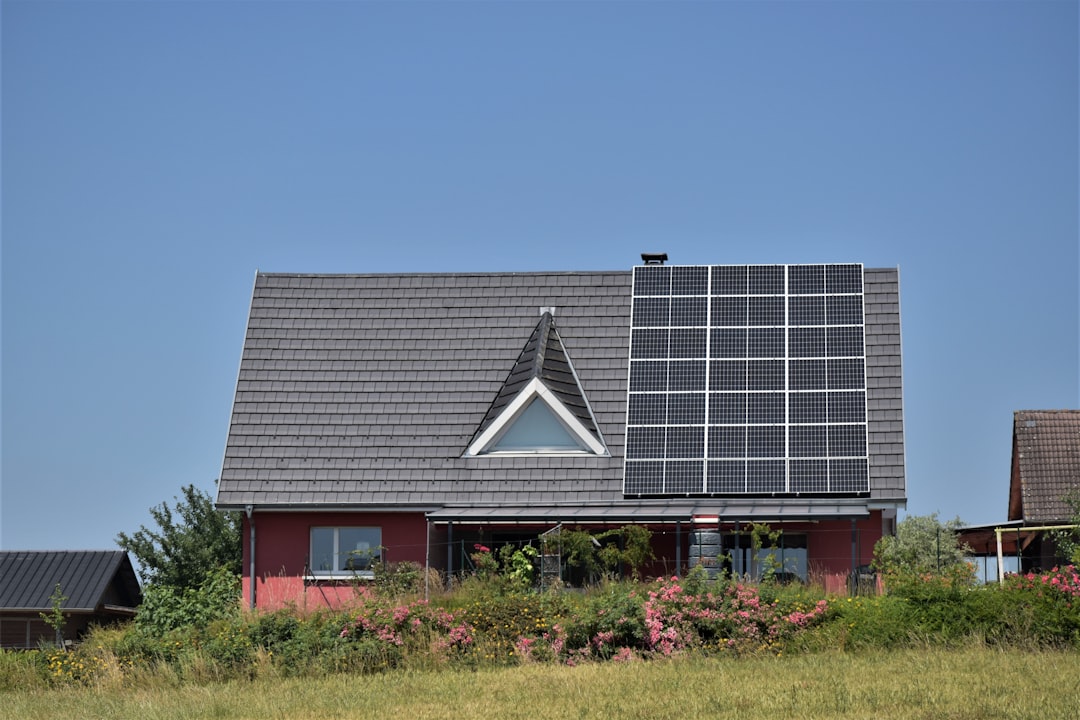
Solar marketing professionals unlock new growth by shifting focus from broad, saturated channels to targeted segments within the solar industry. Tapping into these specialized areas drives more efficient customer acquisition and creates sustainable advantages for B2B revenue teams who need reliable, scalable lead pipelines. To streamline efforts, marketers can leverage real-time audience segmentation and intent signals to reach high-value prospects as they move through the funnel.
Ready to put these strategies into action? Get started for free with Sona.

Audience segmentation allows solar energy contractors to target the right message to the right prospect, increasing conversion rates and reducing wasted ad spend. By understanding the unique needs and motivations of each segment, solar marketers can deliver ads and content that resonate with the pain points and decision criteria of residential homeowners, commercial property managers, or enterprise energy buyers. For more insights on effective segmentation and analytics, visit the Sona blog.
Strategic audience segmentation empowers solar contractors to run more effective digital campaigns, maximize PPC returns, and accelerate solar lead generation by ensuring every dollar is spent engaging decision-makers who are most likely to convert. Ready to optimize your segmentation and targeting? Get started for free with Sona.
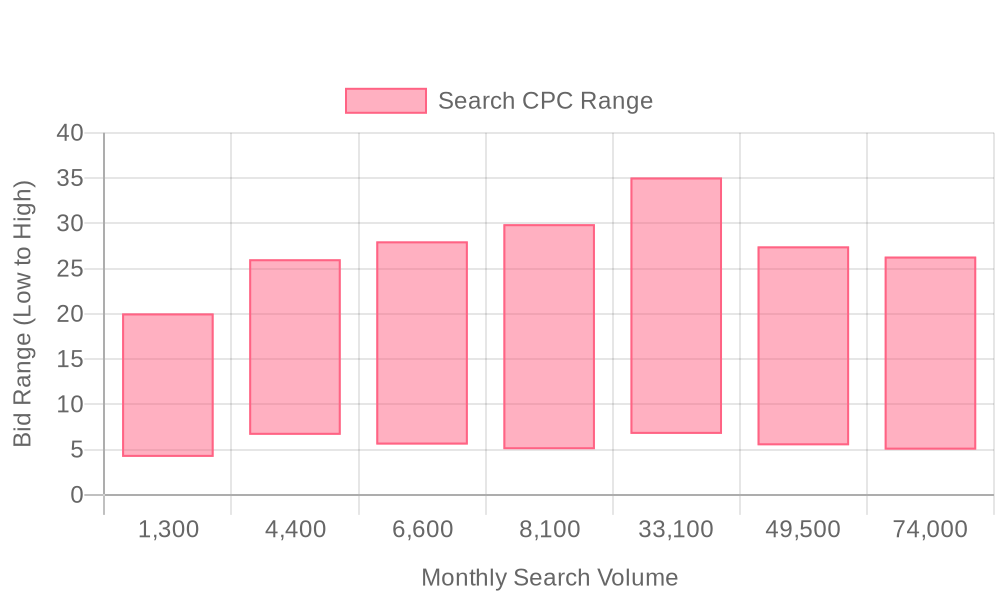
| Industry | Keyword | Monthly Search Volume | Competition Level | Low Bid | High Bid |
| Solar Energy Contractors | top solar companies | 1300 | MEDIUM | 4.2 | 20.04 |
| Solar Energy Contractors | best solar companies | 4400 | LOW | 6.64 | 26.03 |
| Solar Energy Contractors | solar energy contractors | 6600 | LOW | 5.56 | 28 |
| Solar Energy Contractors | solar panel companies | 8100 | LOW | 5.05 | 29.9 |
| Solar Energy Contractors | solar companies near me | 33100 | LOW | 6.74 | 35.06 |
| Solar Energy Contractors | solar companies | 49500 | LOW | 5.48 | 27.45 |
| Solar Energy Contractors | solar energy companies | 74000 | LOW | 5 | 26.32 |
A precise keyword strategy is the backbone of effective Google Ads for solar energy contractors. By targeting keywords that match how decision-makers research solar solutions, you can attract prospects who are actively searching for solar installation, ROI calculators, or local incentives. This approach not only increases campaign efficiency, but also ensures ad spend is directed toward high-value opportunities, resulting in lower cost per lead and stronger funnel performance. For more ideas on refining your paid search approach, explore this list of 50 solar keywords tailored for solar PPC campaigns.
By combining these elements, solar energy contractors can build a keyword foundation that aligns with both current market trends and granular audience behaviors. Using advanced attribution and CRM synchronization, every keyword-driven lead can be tracked, scored, and nurtured throughout the sales process, ensuring that marketing efforts translate directly into measurable business outcomes. Get started for free with Sona.
A successful Google Ads strategy for solar energy contractors begins by structuring highly targeted keyword lists. Group keywords according to core service lines, such as "solar panel installation," "commercial solar systems," or "solar maintenance," to ensure each ad group directly matches searcher intent. Focus on both high-intent commercial keywords and localized long-tail phrases, which capture prospects actively seeking solar solutions in specific geographies. For more on effective keyword targeting, explore 50 high-performing solar PPC keywords to refine your campaigns and boost lead quality.
By leveraging real-time intent signals, marketers can pinpoint which keywords drive engagement from high-value accounts. Dynamic audience enrichment allows keyword groups to update as new companies enter the buying cycle, ensuring your campaigns remain tightly aligned with true market demand and that sales teams receive a steady flow of relevant inquiries.
Ad copy is the critical link between a searcher’s challenge and your solar solution. Craft messaging that addresses industry-specific pain points, such as reducing energy costs or maximizing tax incentives, while highlighting unique service differentiators like certified installers or rapid project timelines. Avoid generic phrasing; instead, tailor each headline and description to the related keyword group and audience segment. For actionable guidance, see these Google Ads best practices for solar lead generation.
To ensure messaging resonates with buyers at every stage, leverage performance analytics to identify which pain points and value propositions result in the highest engagement and conversion rates. By syncing enriched audience data into ad platforms, you can personalize messaging for each segment and increase qualified leads.
Landing pages are the foundation of conversion for solar energy PPC campaigns. Each landing page must align precisely with the ad group’s focus, from headline to imagery to call-to-action. Optimized layouts include trust signals such as certifications, customer testimonials, and clear explanations of benefits like energy bill savings or available rebates. Review solar PPC landing page strategies to improve form completion rates and lower friction for prospects.
With integrated tracking, marketers can connect every ad click to downstream outcomes such as site visits, calls, and appointments. When leads flow seamlessly into CRM and marketing automation systems through automated data sync, follow-up is personalized based on the ad and page that sparked initial interest, improving conversion rates and sales velocity.
Continuous improvement is essential in digital marketing for solar contractors. Use Google Ads performance insights to monitor click-through rates, conversion rates, and cost per lead, identifying both top-performing and underperforming elements at every stage. For additional optimization techniques, check out strategies for running profitable Google Ads campaigns.
By unifying online and offline conversion data, marketers gain a complete view of campaign ROI, including which leads result in actual installations or consultations. Advanced attribution and dynamic audience updates empower teams to focus on high-intent accounts, while real-time signals help identify when prospects are most receptive to outreach. If you're ready to optimize your campaigns, get started for free with Sona and unlock more precise campaign insights.
Expanding your market footprint as a solar energy contractor demands a layered digital approach that goes beyond simply generating leads. Integrating data-driven targeting, real-time engagement, and sophisticated audience management can unlock new growth opportunities and ensure your solar business stands out in increasingly competitive local markets.
Ready to accelerate your solar business growth? Get started for free with Sona.
Navigating the digital advertising landscape is crucial for solar energy contractors aiming to amplify their reach and generate quality leads. In this article, we explored the intricacies of leveraging Google Ads to effectively target and engage potential customers within the solar energy sector. By implementing strategic keywords, refining ad copy, and optimizing landing pages, you can significantly enhance your advertising efforts and maximize return on investment.
We addressed the challenges of operating in a competitive market and emphasized the importance of tailored advertising strategies. By focusing on precise targeting and continuous optimization, you can overcome these hurdles and position your business as a leader in solar energy solutions. With the right tools and insights, your advertising campaigns can achieve remarkable success.
Imagine transforming your business's online presence, capturing the attention of homeowners and businesses interested in solar energy. Embrace the potential of Google Ads to elevate your brand and drive sustainable growth. As you implement these strategies, you'll not only attract more customers but also establish a lasting impact in the renewable energy space.
To fully realize the benefits of an integrated approach to your advertising strategy, start for free to experience our platform and its capabilities today. This is your opportunity to harness cutting-edge insights and streamline your marketing efforts for unparalleled results.
Solar contractors can effectively use Google Ads by setting clear objectives, performing targeted keyword research, designing engaging ad creatives, optimizing landing pages, and continuously monitoring campaign performance to generate high-intent leads.
The article does not specify a precise budget, but emphasizes the importance of aligning ad spend with high-intent keywords and audience segments to maximize ROI and avoid wasted spending.
Best practices include setting clear goals, leveraging advanced data integration, performing detailed keyword research, designing personalized ad creatives, optimizing landing pages, and continuously monitoring campaign performance.
To create a successful Google Ads campaign for solar energy, define clear objectives, conduct targeted keyword research, craft engaging ad content, optimize landing pages for conversion, and use data-driven insights to refine and improve the campaign.
Targeting options include search campaigns with high-intent keywords, display and video campaigns for broader reach, remarketing to re-engage previous visitors, local services ads for geographic targeting, and audience segmentation based on firmographics and intent signals.
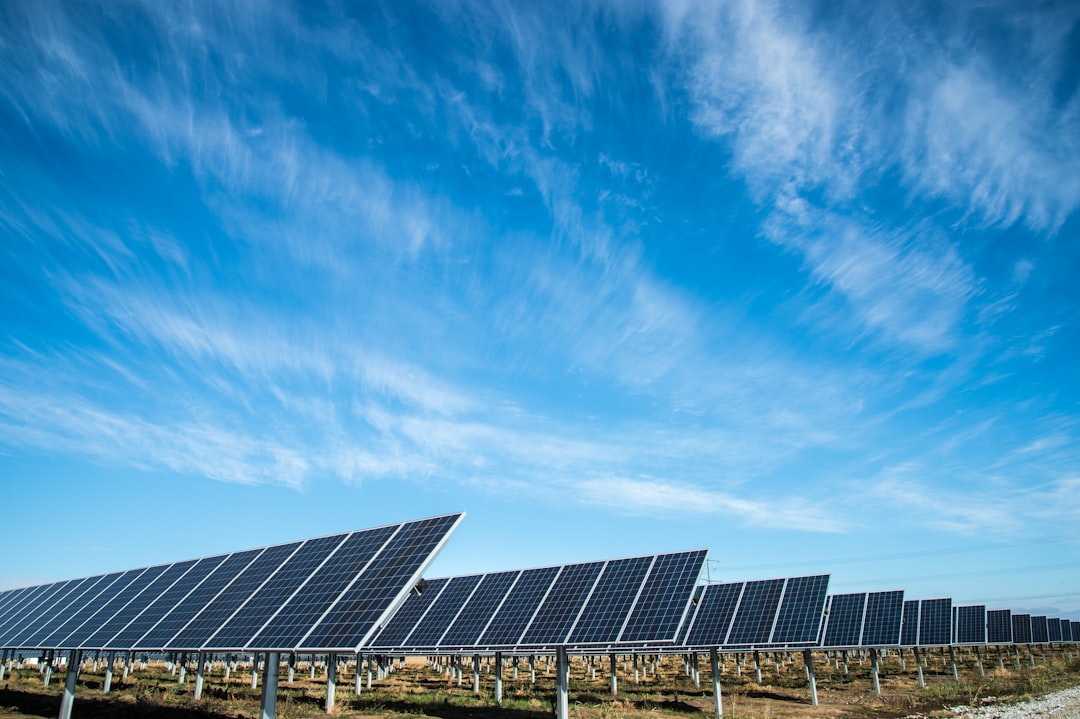
In the ever-evolving landscape of digital marketing, solar energy contractors face unique challenges in capturing the attention of potential clients. One common barrier is high demo interest going unconverted due to a lack of follow-up mechanisms. As the demand for renewable energy solutions grows, leveraging Google Ads can be a game-changer in reaching high-intent prospects at the precise moment they are searching for solar solutions. Advanced tools now allow businesses to retarget these potential leads and reignite their interest by reminding them of the value offered. Moreover, delayed or manual follow-ups can mean hot leads cooling off before sales can engage; however, modern platforms flag visitors early on, aiding in layering intent-based audience segments into campaigns. This guide provides a comprehensive framework for using Google Ads to generate leads and grow your solar energy business.
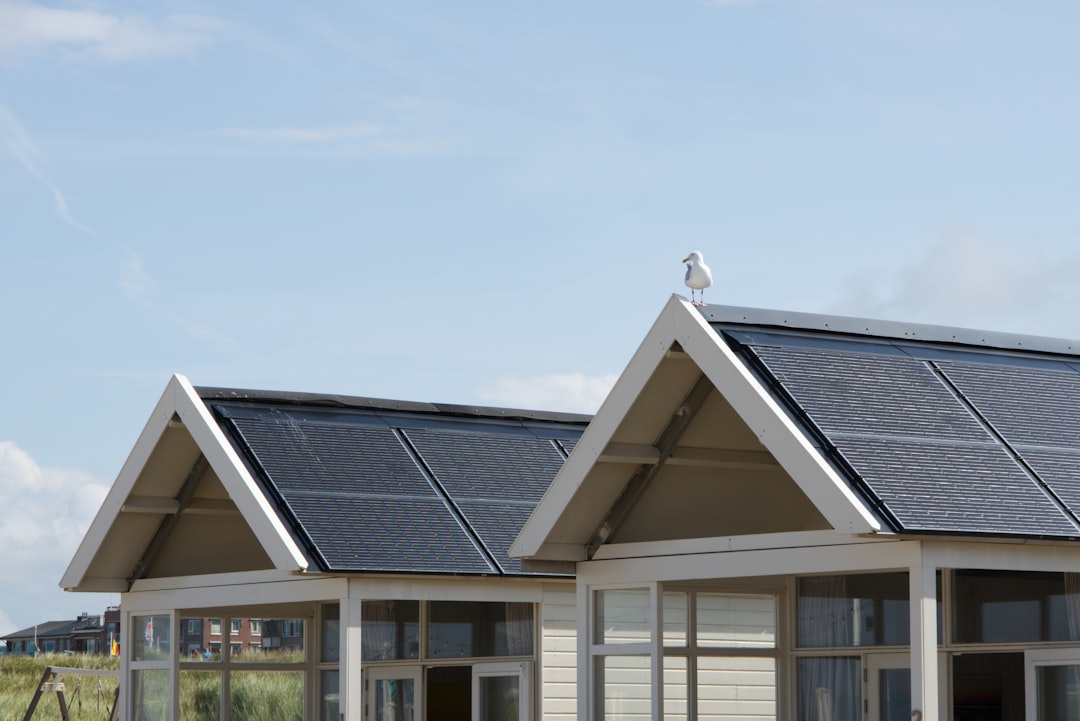
Solar energy contractors face significant competition in both residential and commercial markets, making digital channels essential for scalable growth. Google Ads offers a direct path to high-intent prospects, allowing solar businesses to capitalize on real-time demand and outperform less agile competitors.
Data-driven Google Ads campaigns help contractors reach homeowners and businesses at the exact moment they are searching for solar solutions. When these campaigns are rooted in actionable insights, teams can target the right prospects, reduce wasted spend, and quickly identify the highest-value leads for their sales pipeline.
Ready to take your solar lead generation to the next level? Get started for free with Sona.
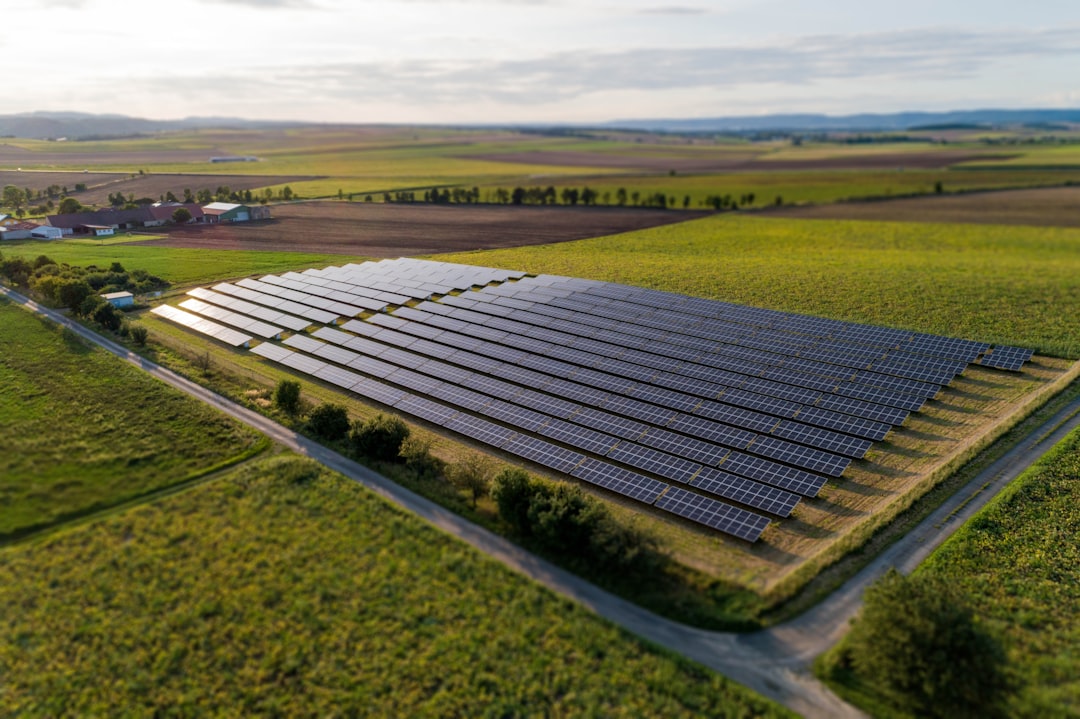
Solar energy contractors operate in a rapidly expanding sector where competition for qualified leads is fierce. Google Ads offers a direct channel to reach homeowners and businesses actively searching for solar solutions, ensuring every dollar targets prospects with immediate buying intent. For more guidance on digital marketing strategy, explore our marketing strategy blog.
Unlike broad-based marketing tactics, Google Ads enables solar companies to pinpoint high-value audiences based on geography, intent, and demographic signals. By leveraging real-time audience segmentation, contractors can minimize wasted spend and focus their message on segments most likely to convert, accelerating sales cycles and improving marketing efficiency.
Delayed responses from traditional campaigns often translate into lost opportunities, especially when prospects are ready to make decisions. Google Ads provides real-time engagement, allowing solar teams to connect with high-intent leads at their peak of interest. With company identification, marketers can identify which website visitors represent real business opportunities, moving beyond anonymous traffic to actionable prospect data.
Integrating campaign insights with dynamic audience management ensures that ad targeting evolves alongside the buyer journey. As leads advance through the funnel, audiences automatically update, ensuring solar companies continually retarget the right prospects with relevant messaging. To see how this unified approach streamlines solar lead generation and maximizes ROI, get started for free with Sona.
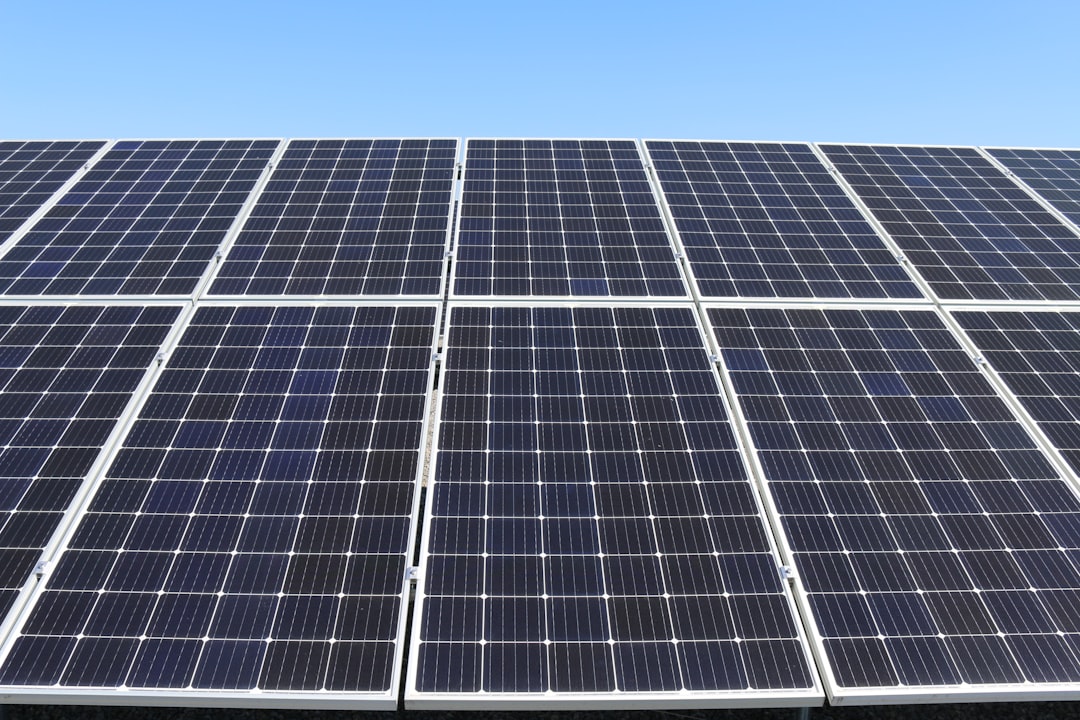
Ready to see how these campaign types can drive growth for your solar business? Get started for free with Sona.
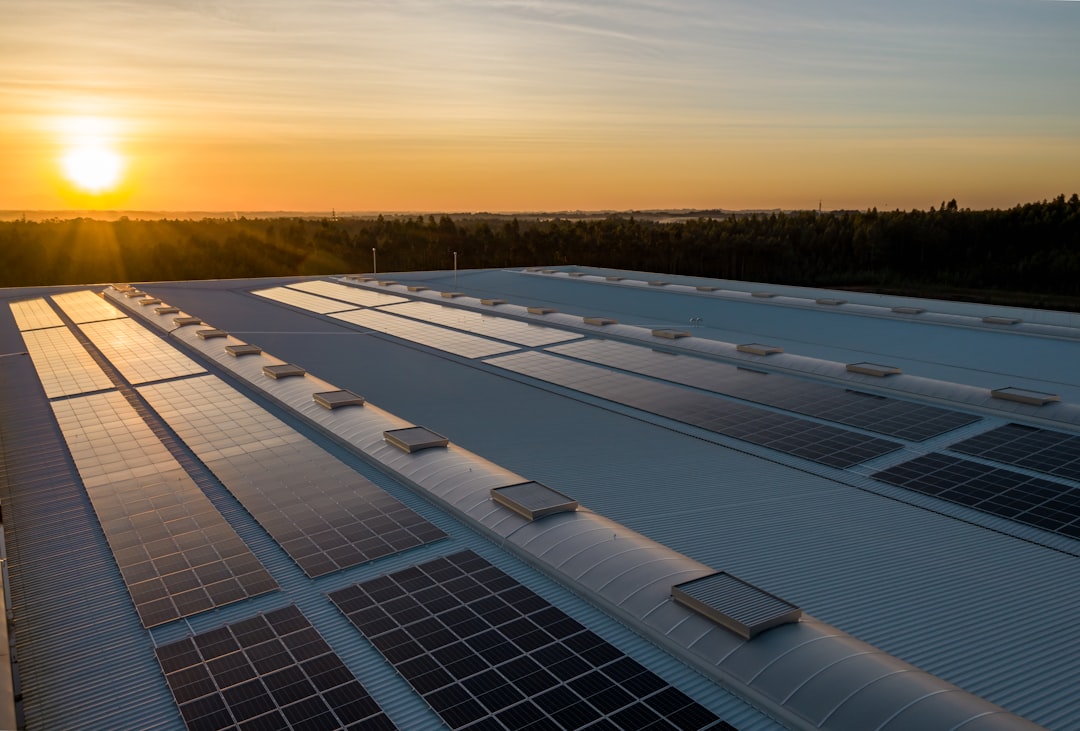
Solar marketing continues to evolve as buyers become more sophisticated and competition intensifies. The highest-performing teams identify growth opportunities by targeting vertical niches, uncovering competitive gaps, and executing localized strategies tailored to new and emerging markets.
Looking to accelerate growth in solar marketing? Get started for free with Sona.
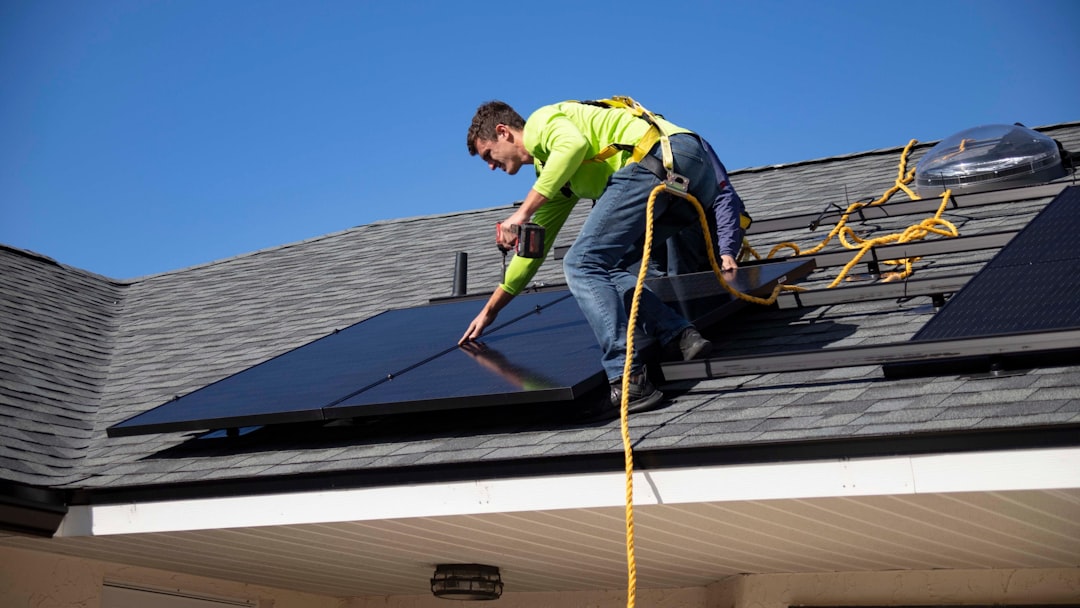
Audience segmentation is essential for solar contractors aiming to generate high-quality leads and improve marketing ROI. By delivering tailored messages to specific segments, contractors can convert interest into action more efficiently while ensuring every dollar of spend targets the right prospect at the right time. For additional guidance on segmenting and targeting, explore this comprehensive guide to account-based marketing.
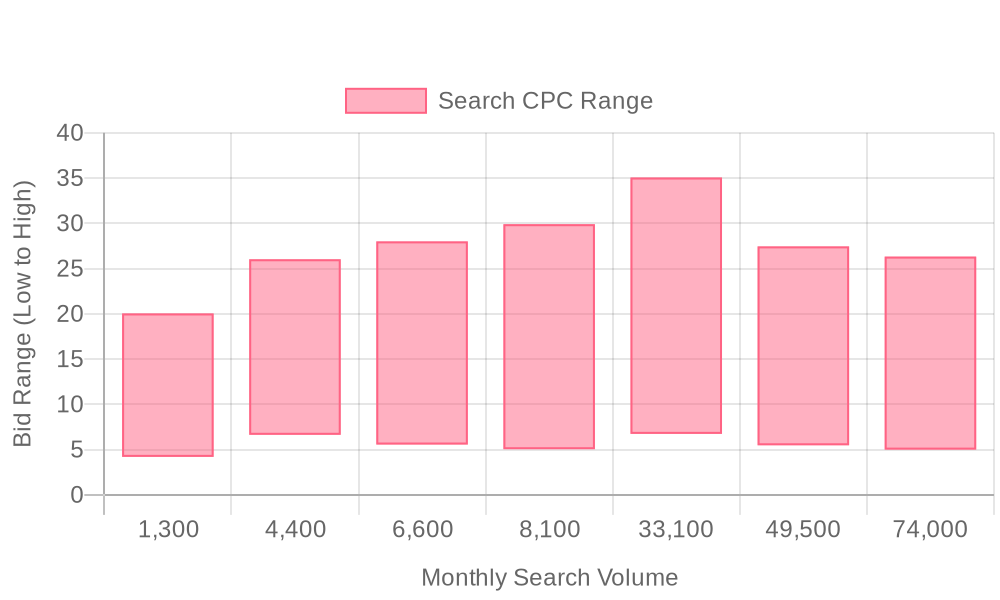
| Industry | Keyword | Monthly Search Volume | Competition Level | Low Bid | High Bid |
| Solar Energy Contractors | top solar companies | 1300 | MEDIUM | 4.2 | 20.04 |
| Solar Energy Contractors | best solar companies | 4400 | LOW | 6.64 | 26.03 |
| Solar Energy Contractors | solar energy contractors | 6600 | LOW | 5.56 | 28 |
| Solar Energy Contractors | solar panel companies | 8100 | LOW | 5.05 | 29.9 |
| Solar Energy Contractors | solar companies near me | 33100 | LOW | 6.74 | 35.06 |
| Solar Energy Contractors | solar companies | 49500 | LOW | 5.48 | 27.45 |
| Solar Energy Contractors | solar energy companies | 74000 | LOW | 5 | 26.32 |
Effective keyword strategy remains the foundation of high-performing Google Ads for solar energy contractors. By combining broad, high-volume keywords with precise, long-tail search terms, solar businesses can capture both general interest and ready-to-buy leads. For practical keyword ideas and optimization examples, review this list of top solar energy keywords and visit our blog for ongoing strategies tailored to the solar industry.
Targeting relevant keywords is only the beginning. Filtering out irrelevant traffic through negative keywords is essential for maintaining efficiency and budget control in solar PPC campaigns. Excluding terms such as “DIY solar kits,” “solar jobs,” or unrelated regions prevents wasted spend and ensures that only high-intent homeowners and commercial prospects see your ads. With enhanced visitor identification, marketers can now move beyond anonymous clicks and pinpoint which companies or individuals are truly in-market, enabling smarter keyword bidding and more precise ad placements.
Local targeting is critical for solar energy contractors, as most buyers seek providers in their immediate area. Adding geographic modifiers such as city, county, or neighborhood names to keywords maximizes local SEO impact and drives higher conversion rates from users searching for “solar installers in [city]” or “solar panel quotes [region].” With dynamic audience capabilities, your keyword-driven segments can automatically update as prospects move through research, quote, and decision phases—ensuring your campaigns remain relevant and competitive. Ready to elevate your solar PPC strategy? Get started for free with Sona.
Effective Google Ads for solar energy contractors start with a robust keyword strategy. Organize keywords by core service groups such as residential solar panel installation, commercial solar maintenance, and solar battery upgrades. This approach aligns your ads with buyer intent, allowing you to capture prospects searching for exactly what you offer. Go beyond generic terms and include long-tail variations reflecting local market nuances, seasonal incentives, or specific pain points like "solar panel repair after hail." By leveraging real-time audience data, teams can continuously adjust keyword groups based on who is actually visiting your site and which companies are showing in-market intent. This ensures budget allocation is dynamic and focused on high-conversion segments, not just static search terms.
When targeting both B2B and B2C segments, enriched keyword lists help uncover decision-makers within commercial accounts and homeowners in solar-friendly regions. Connecting your CRM and digital advertising data allows for seamless updating of negative and positive keyword lists, reducing wasted spend on irrelevant search queries. As audiences shift—such as when a lead moves from research to procurement—keyword targeting can update dynamically to match the new stage, keeping your campaigns relevant and efficient. For inspiration on high-performing search terms, review this list of 50 solar keywords tailored for PPC and SEO campaigns.
Solar contractors must craft ad copy that directly addresses customer challenges and showcases clear benefits. Messaging should reflect the unique value of your service lines, such as "Cut Energy Bills 40% with Solar Installation" or "Certified Solar Maintenance for Commercial Properties." Avoid generic statements; instead, highlight local incentives, rapid installation timelines, or exclusive warranties to stand out in competitive markets. Incorporating real-time intent signals from on-site behavior enables you to tailor your copy for leads already evaluating proposals versus those still exploring options.
With advanced visitor identification, revenue teams can segment ad messaging by prospect type. For example, commercial property managers receive ads focusing on ROI and operational savings, while homeowners see messaging about rebates and environmental impact. This segmentation ensures higher engagement and conversion rates, as every ad is relevant to the searcher's immediate needs and context.
High-converting landing pages for solar energy PPC campaigns must maintain message match from ad to page, reinforcing trust and relevance. Every element, from the headline to the contact form, should support the core offer presented in the ad. Use customer testimonials, trust badges, and region-specific proof points to address skepticism and build credibility. For local service ads for solar, ensure location-specific details are clear, such as servicing certain neighborhoods or offering same-day consultations. For a broader perspective on Google Guaranteed Local Services Ads for solar services, review proven tactics to boost local credibility.
Landing pages should also be optimized for performance tracking, supporting both online form submissions and offline actions like phone calls or site visits. Integrating CRM and analytics platforms allows you to attribute leads back to their campaign source, measure true ROI, and identify bottlenecks in the conversion funnel. As lead data flows between systems, audience lists are enriched and remarketing campaigns can be triggered for visitors who engaged but did not convert, creating a seamless feedback loop for continuous improvement.
Ongoing optimization is essential for solar business advertising to remain competitive and cost-effective. Use Google Ads insights to monitor conversion rates, cost per lead, and engagement by keyword group, adjusting bids and budgets based on real-time performance. By unifying ad platform data with CRM outcomes, revenue teams gain a complete view of which campaigns generate actual revenue, not just leads. This enables informed decisions about scaling successful ad groups and pausing underperforming ones. Discover additional strategies for Google Ads in solar lead generation to further refine your optimization tactics.
Dynamic audience management plays a key role, as audiences are automatically updated when prospects move through the funnel or new high-fit accounts are identified. Retargeting strategies can be refined using first-party intent signals, ensuring only the most relevant prospects see remarketing ads. Advanced attribution allows both online and offline conversions—like booked site assessments or signed contracts—to be tracked, providing a holistic measure of marketing impact on sales outcomes. Ready to maximize your marketing ROI? Get started for free with Sona.
Solar energy businesses gain an edge by building a presence that extends beyond conventional advertising channels. Targeted digital marketing for solar, when paired with unified audience insights, ensures each touchpoint drives measurable progress toward customer acquisition and retention goals.
Successfully leveraging Google Ads for solar energy contractors requires a strategic and data-driven approach. By focusing on precise targeting, optimizing ad creative, and continuously refining campaigns using performance data, solar businesses can significantly enhance their lead generation efforts and maximize marketing ROI.
Disconnected intent signals are addressed by directly integrating insights into outreach strategies, ensuring a more robust connection with potential leads. Consider utilizing capabilities like intent signals and CRM integration to streamline processes and drive results—or get started for free with Sona to see how unified audience intelligence can transform your solar marketing.
In conclusion, leveraging Google Ads effectively can be a game-changer for solar energy contractors looking to expand their reach and generate more leads. By understanding the nuances of targeting, crafting compelling ad copy, and optimizing your campaigns for maximum ROI, you can position your business as a leader in the renewable energy sector.
Throughout this article, we've discussed the unique challenges faced by solar energy contractors in the digital advertising space and provided actionable strategies to overcome these hurdles. From setting precise geographic targets to highlighting the environmental benefits of solar power, each tactic is designed to enhance your advertising impact and attract the right clientele.
Imagine transforming your solar energy business with a steady stream of qualified leads, ready to convert into satisfied customers. By implementing these strategies, you open the door to greater brand recognition and business growth. Embrace the power of digital marketing to drive your success and make a meaningful impact in the renewable energy market.
We invite you to start for free to experience our platform and its capabilities today. This is your opportunity to harness cutting-edge technology and data-driven insights to revolutionize your approach to digital advertising.
Solar contractors can effectively use Google Ads by leveraging data-driven campaigns that reach high-intent prospects, utilizing advanced tools for retargeting leads, and layering intent-based audience segments into their campaigns.
While the article does not specify an exact budget, it emphasizes the importance of aligning spend with high-intent keywords and dynamically allocating budget towards segments showing spikes in demand to reduce wasted spend.
Best practices include defining clear objectives, performing targeted keyword research, designing engaging ad creative, optimizing landing pages, and continuously monitoring performance metrics.
To create a successful campaign, you should start with targeted keyword lists, develop compelling ad copy, design effective landing pages, and implement data-driven optimizations using real-time insights and intent signals.
Targeting options include geographic, intent-based, and demographic signals, as well as dynamic audience management that updates as leads move through the funnel, ensuring relevant messaging and minimizing wasted spend.
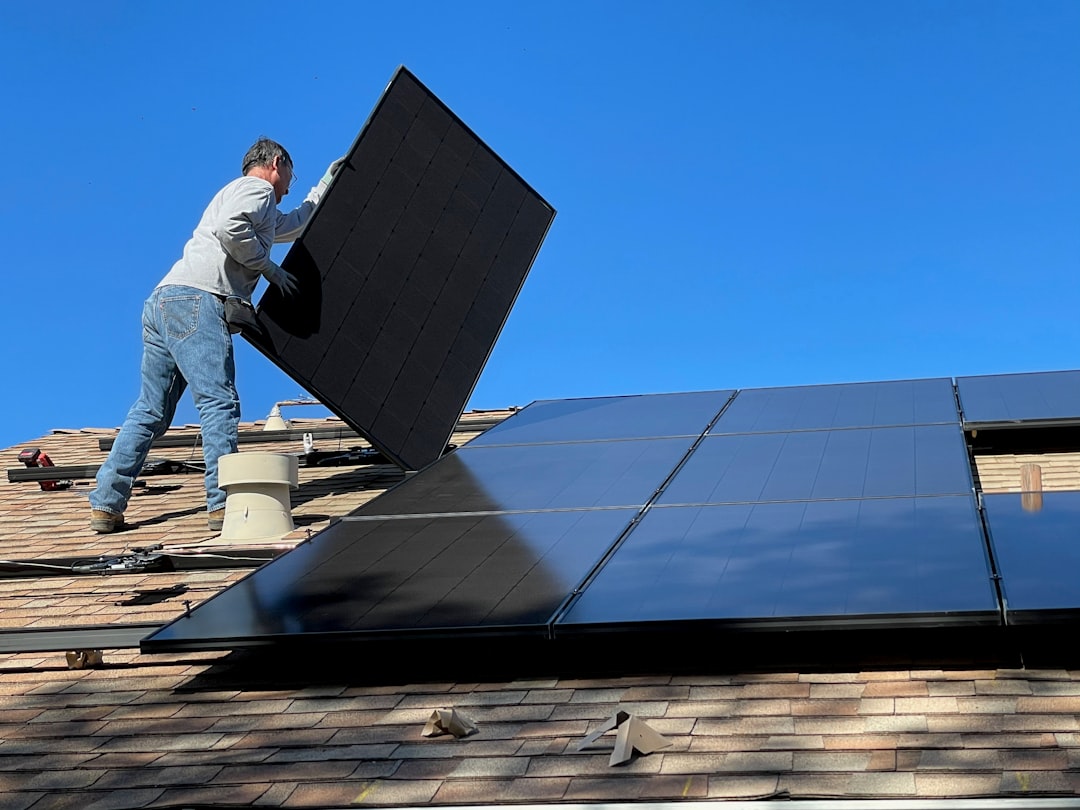
In the ever-evolving landscape of digital marketing, solar energy contractors face unique challenges in capturing the attention of potential clients. One common barrier is high demo interest going unconverted due to a lack of follow-up mechanisms. As the demand for renewable energy solutions grows, leveraging Google Ads can be a game-changer in reaching high-intent prospects at the precise moment they are searching for solar solutions. Advanced tools now allow businesses to retarget these potential leads and reignite their interest by reminding them of the value offered. Moreover, delayed or manual follow-ups can mean hot leads cooling off before sales can engage; however, modern platforms flag visitors early on, aiding in layering intent-based audience segments into campaigns. This guide provides a comprehensive framework for using Google Ads to generate leads and grow your solar energy business.
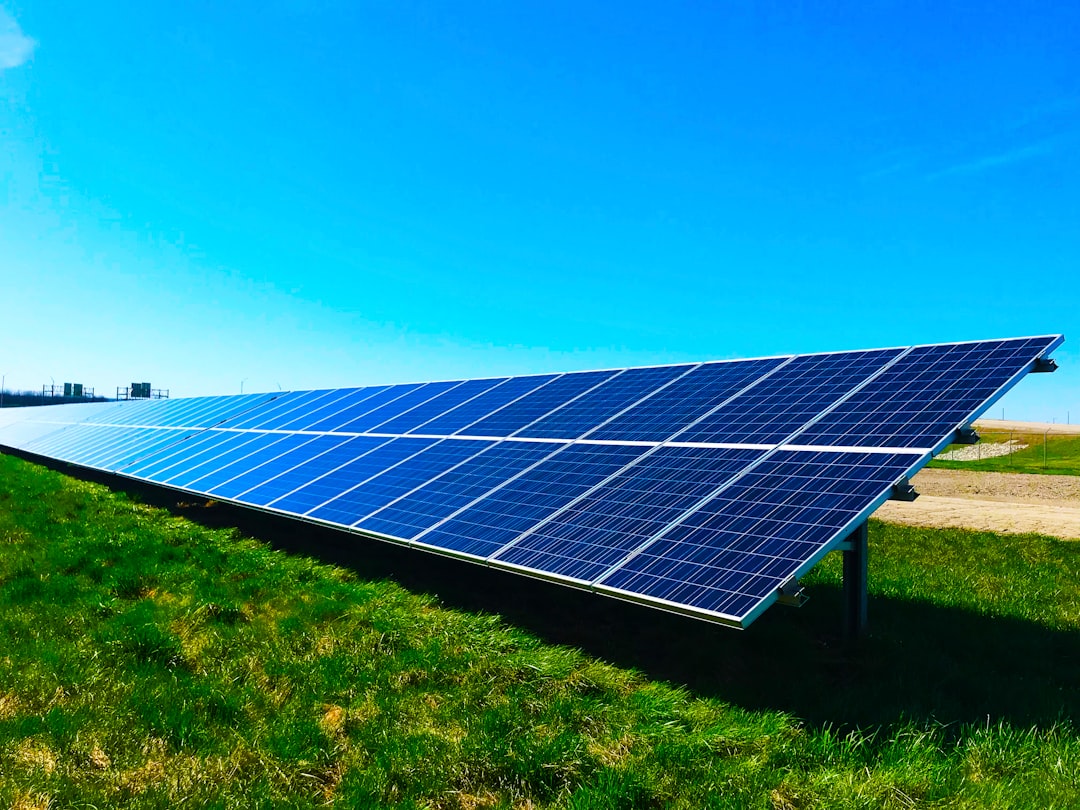
Modern solar energy contractors operate in a competitive, fast-moving environment where digital marketing precision decides revenue outcomes. By leveraging Google Ads, solar businesses can engage high-intent prospects at the moment of search, matching their expertise with the needs of property owners actively seeking solar solutions. For a detailed walkthrough on maximizing solar lead generation, explore this step-by-step guide for solar Google Ads.
A data-driven Google Ads strategy unlocks measurable growth by aligning campaign assets, keyword intent, and audience targeting with revenue goals. Solar marketing teams that unify their outreach data can pinpoint which opportunities to prioritize, shift spend toward high-converting segments, and maximize every dollar invested in PPC for solar contractors.
This structured, insight-driven approach positions solar contractors to dominate local search results, fill their pipeline with qualified leads, and ultimately accelerate business growth. Get started for free with Sona to see how unified data and intent-driven outreach can transform your digital marketing for solar.

Solar energy contractors operate in a highly competitive environment where timing, relevance, and visibility directly affect lead quality and project pipeline. Google Ads empowers these businesses to engage high-intent prospects at the precise moment they begin searching for solar solutions, increasing the likelihood of conversion and minimizing wasted ad spend. For actionable strategies on leveraging Google Ads in solar lead generation, explore this step-by-step guide for solar companies.
Unlike traditional outreach or organic channels that often rely on passive awareness and delayed engagement, Google Ads delivers targeted visibility to users already considering a solar investment. The platform’s robust targeting capabilities enable contractors to appear at the top of search results for critical queries, ensuring that messaging reaches the right audience before competitors do. For more on optimizing your campaigns, visit our blog for solar marketing insights.
Solar marketing with Google Ads also unlocks greater efficiency through measurable performance metrics and granular control over campaign parameters. By leveraging advanced visitor identification, contractors can move beyond anonymous impressions, gaining insights into exactly which companies and buyers are interacting with their ads. This data-driven approach allows for real-time adjustments and informed budget allocation, ensuring that every dollar is directed toward the prospects most likely to convert.
Furthermore, continual advances in digital marketing for solar—such as real-time audience segmentation—enable solar contractors to shift focus and resources to the most engaged accounts as they progress through the buying cycle. This agility not only streamlines demand generation but also supports personalized engagement, paving the way for higher ROI and a more predictable sales pipeline. To see these capabilities in action, get started for free with Sona.
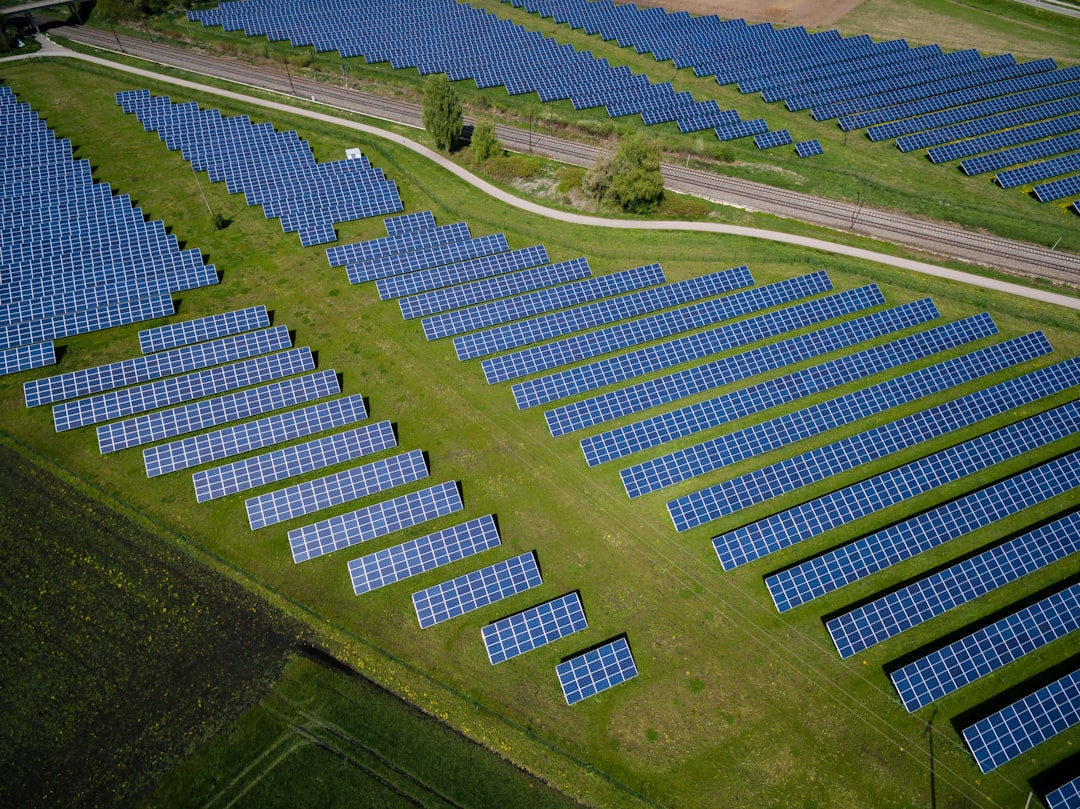
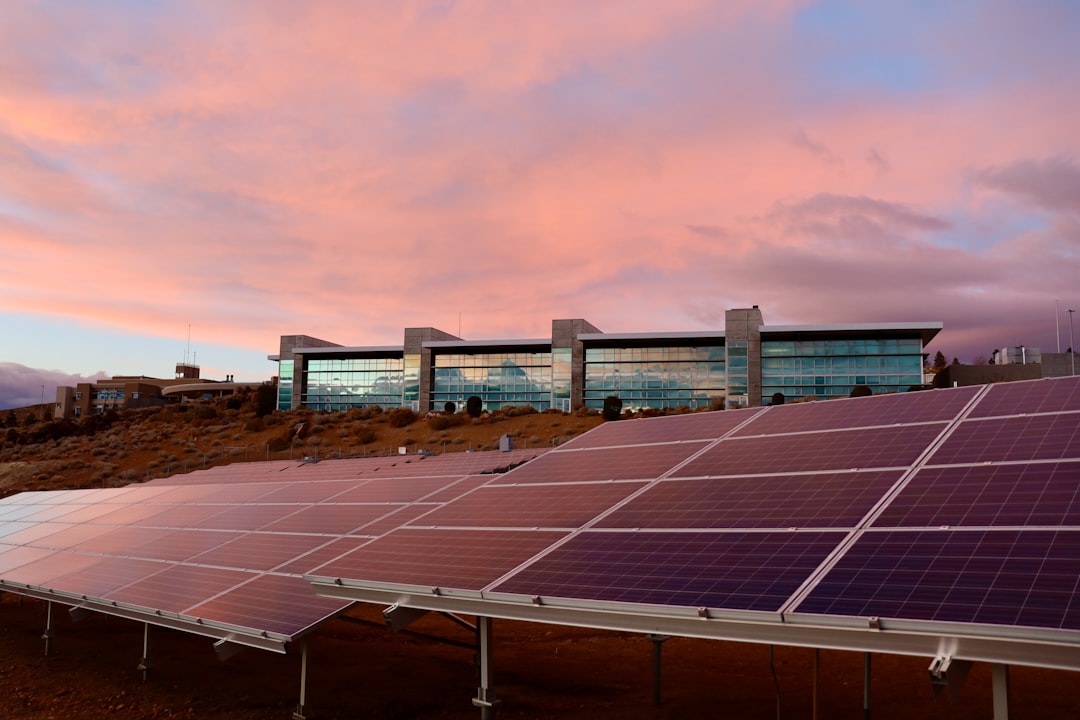
Expanding reach in solar marketing requires precision targeting and a willingness to look beyond generic campaigns. Revenue teams that explore niche opportunities within the solar sector consistently outperform those relying solely on broad, high-competition keywords. By focusing on granular data and segmented audiences, marketers unlock pathways to qualified leads and improved conversion rates with strategies such as vertical keyword targeting and real-time audience segmentation.
Ready to put these insights into action? Get started for free with Sona.
Audience segmentation remains fundamental for solar contractors seeking to maximize the value of every marketing dollar. By categorizing prospects according to their business type, such as residential homeowners versus commercial property managers, contractors can create more relevant, personalized communications that resonate and convert at higher rates. Explore more strategies for optimizing segmentation and demand generation in the Sona blog.
Defining clear segments starts with analyzing your client base and breaking it into actionable groups: residential customers, small businesses, and large corporations. Each group has distinct priorities, budgets, and timelines. For example, residential clients may be motivated by immediate utility savings or environmental impact, while commercial clients often prioritize long-term ROI, regulatory incentives, and large-scale system integration. By mapping these differences, solar marketers can tailor their messaging, offers, and value propositions to address what matters most to each audience, as outlined in this guide to running Google Ads campaigns for solar.
Overlaying intent signals further sharpens this segmentation. Leveraging behavioral data and intent signals—site visits, content consumption, demo requests, or pricing page activity—enables solar contractors to gauge genuine buying interest and act before competitors. With enriched intent data and real-time visitor identification, marketers can prioritize accounts showing active interest, adjust budgets toward the most promising segments, and deploy campaigns when prospects are ready to engage.
Custom ad groups are essential for translating segmentation into campaign structure. Each audience segment should be matched with its own ad group, featuring tailored ad copy, dedicated landing pages, and budget allocations that reflect the segment’s strategic value. With dynamic audience management and CRM integration, segments update automatically as prospects move through the buying journey, ensuring ongoing relevance. Additionally, syncing enriched audience data into Google Ads and connected CRMs ensures that lead nurturing and retargeting are informed not only by static attributes but by real-time behavioral changes, increasing conversion rates and reducing lead leakage. Get started for free with Sona.
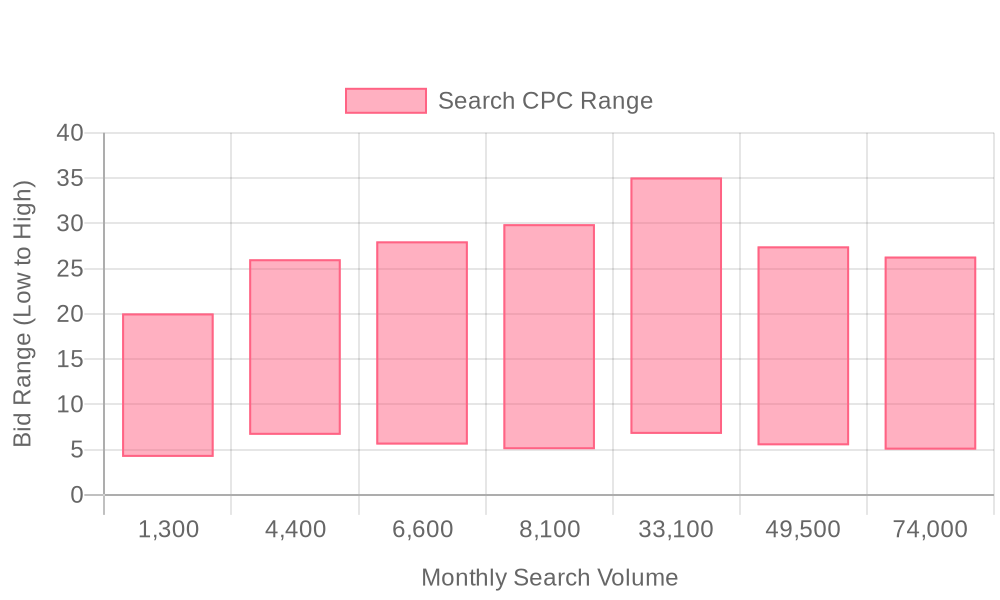
| Industry | Keyword | Monthly Search Volume | Competition Level | Low Bid | High Bid |
| Solar Energy Contractors | top solar companies | 1300 | MEDIUM | 4.2 | 20.04 |
| Solar Energy Contractors | best solar companies | 4400 | LOW | 6.64 | 26.03 |
| Solar Energy Contractors | solar energy contractors | 6600 | LOW | 5.56 | 28 |
| Solar Energy Contractors | solar panel companies | 8100 | LOW | 5.05 | 29.9 |
| Solar Energy Contractors | solar companies near me | 33100 | LOW | 6.74 | 35.06 |
| Solar Energy Contractors | solar companies | 49500 | LOW | 5.48 | 27.45 |
| Solar Energy Contractors | solar energy companies | 74000 | LOW | 5 | 26.32 |
A high-impact keyword strategy is essential for driving qualified leads in solar energy PPC campaigns. Solar contractors should focus on a balanced mix of high-volume search terms and long-tail keywords to ensure visibility across the entire buying journey. Phrases such as "solar installation for homes," "solar energy cost savings," and "commercial solar panel installers near me" capture both broad market interest and buyers with specific intent, making campaigns more versatile and adaptive to different user needs. For additional inspiration, explore this curated list of high-performing solar energy keywords to further refine your targeting.
Incorporating negative keywords is critical for filtering out irrelevant clicks that drain budget and lower lead quality. Excluding terms like "DIY solar kits," "solar system planets," or "job openings in solar" ensures ads are displayed only to serious prospects, not hobbyists or job seekers. This continuous refinement, supported by real-time data on search query performance, keeps campaigns efficient and aligned with evolving search behavior. Advanced marketing platforms enable marketers to identify not just keywords but also visitor intent, so budget can be shifted toward high-converting accounts as new search trends emerge.
Geographic modifiers elevate local SEO for solar contractors by tailoring ads to specific service areas. Including city, state, or region in keywords—for instance, "Austin solar panel installation" or "solar companies in Orange County"—helps capture leads actively searching for solutions in their area. When audience and lead data are unified across CRM and ad platforms, enriched location signals allow marketers to update audience lists dynamically as prospects move through the funnel. This ensures that solar advertising remains relevant, improves quality scores, and drives higher conversion rates, ultimately optimizing ROI for digital marketing efforts in the solar sector.
Robust keyword lists form the foundation of high-performing Google Ads for solar energy contractors. Grouping keywords by core service areas such as "solar panel installation," "solar maintenance," "solar battery storage," and "solar financing" ensures each ad group attracts users with clear, purchase-ready intent. This segmentation is critical for aligning with the unique needs of residential, commercial, or industrial customers, and it enables more relevant ad copy that speaks directly to the prospect's project scope and urgency. For a curated list of high-performing terms, explore solar energy keywords designed specifically for digital advertising campaigns.
With Sona’s Destinations, teams can identify trending search terms at the account or regional level. By integrating visitor identification, marketers can move beyond generic keyword research to discover which phrases convert among high-value prospects and prioritize them accordingly. This approach ensures budget is allocated to keywords that consistently yield qualified leads, improving cost efficiency and campaign ROI.
Solar marketing success hinges on messaging that addresses industry-specific pain points and priorities. Crafting unique ad copy for each service group—whether it's "Lower your energy bills with solar panel installation" or "Protect your investment with proactive solar maintenance"—draws in searchers whose needs match your solutions. Avoiding boilerplate copy prevents wasted spend on users who do not fit your ideal customer profile. See best practices for Google Ads in solar for guidance on writing effective, conversion-focused ads.
Dynamic audience data enables teams to personalize messaging at scale. By leveraging real-time behavioral insights, ad creatives can highlight offers or case studies most relevant to users' current stage in the decision process. This level of contextual targeting raises click-through rates and ensures solar contractors engage leads when interest is highest, setting the stage for stronger conversions.
An optimized landing page is essential for converting costly PPC traffic into actionable solar leads. Every element—from the headline reflecting the exact keyword and service, to concise benefit-driven copy and a streamlined lead form—should be tailored to the specific ad group and user intent. Clear calls-to-action like "Get a free solar quote" or "Book a virtual site assessment" facilitate immediate engagement while building trust. For a comprehensive guide to solar-specific PPC landing pages, review solar PPC ads insights.
Modern revenue teams rely on data from both online forms and offline touchpoints to attribute conversions accurately. When audience and conversion data sync seamlessly between CRM and ad platforms, you gain a complete view of which marketing assets and landing page variations are driving closed deals. This feedback loop is essential for continuous improvement and scaling successful solar energy PPC campaigns.
Continuous optimization is the hallmark of high-performing solar advertising strategies. Teams should routinely analyze Google Ads insights, reviewing search term reports, user engagement patterns, and conversion paths to refine targeting and creative. Adjusting bids for high-intent locations, expanding negative keyword lists, and split-testing headlines or calls-to-action all drive incremental gains in lead volume and quality. For actionable tips, refer to PPC advertising tips for solar panel businesses.
With real-time intent data, solar contractors can go a step further—adapting campaign tactics as soon as a lead moves through the sales funnel or displays new buying signals. This closed-loop approach not only maximizes ROI but also helps sales teams prioritize outreach to the most promising solar energy prospects. To see how this works in practice, get started for free with Sona and unlock dynamic audience insights for your solar campaigns.

Solar energy contractors looking to strengthen their presence in a competitive market must move beyond traditional tactics and embrace a holistic digital marketing strategy. The ability to combine targeted outreach, advanced data integration, and continuous engagement ensures your business remains top of mind for prospects considering solar solutions. For more insights on optimizing your approach, explore our latest marketing technology blog.
Expanding your solar presence requires a strategy that unites digital advertising, data-driven targeting, and personalized engagement. Each step, from content retargeting to CRM-based upselling and local market identification, becomes more effective when powered by unified data and real-time intent signals, ensuring every marketing dollar works harder and delivers greater impact. If you're ready to put these strategies into action, get started for free with Sona.
In conclusion, effectively leveraging Google Ads can significantly elevate your solar energy contracting business by attracting more customers and generating valuable leads. With a focused advertising strategy, you can position your services in front of the right audience, ensuring that your marketing efforts translate into tangible results.
Throughout this article, we've delved into the unique challenges faced by solar energy contractors, such as targeting the right demographics and crafting compelling ad content. By utilizing data-driven insights and optimizing your ad campaigns, you can overcome these challenges and maximize your return on investment. Key strategies include refining your keywords, using location targeting, and continuously monitoring and adjusting your campaigns for optimal performance.
Imagine transforming your business by connecting with homeowners and businesses that are genuinely interested in solar energy solutions. By implementing the strategies discussed, you not only enhance your advertising effectiveness but also empower your brand to stand out in a competitive market. This journey is about more than just attracting leads—it's about building lasting relationships and establishing your authority in the solar industry.
We invite you to start for free to experience the capabilities of our platform, designed to unify your go-to-market data and drive actionable insights. Embrace this opportunity to refine your advertising strategies and propel your solar energy business to new heights.
Solar contractors can effectively use Google Ads by leveraging targeted keyword research, designing engaging ad creatives, optimizing landing pages, and continuously monitoring performance to reach high-intent prospects and generate qualified leads.
The budget for Google Ads in the solar industry should be aligned with campaign goals and focused on high-converting segments, ensuring efficient spend and maximizing ROI through data-driven strategies.
Best practices for advertising solar services include defining clear objectives, performing targeted keyword research, designing engaging ad creatives, optimizing landing pages, and continuously monitoring and optimizing campaign performance.
To create a successful Google Ads campaign for solar energy, establish clear campaign objectives, perform targeted keyword research, design tailored ad creatives, optimize landing pages, and ensure continuous performance monitoring and optimization.
Targeting options for solar energy Google Ads include keyword targeting, geo-targeting, audience segmentation, and retargeting to reach high-intent prospects and refine campaign precision.
Join results-focused teams combining Sona Platform automation with advanced Google Ads strategies to scale lead generation

Connect your existing CRM

Free Account Enrichment

No setup fees
No commitment required

Free consultation

Get a custom Google Ads roadmap for your business
Join results-focused teams using Sona Platform automation to activate unified sales and marketing data, maximize ROI on marketing investments, and drive measurable growth

Connect your existing CRM

Free Account Enrichment

No setup fees
No commitment required

Free consultation

Get a custom Google Ads roadmap for your business
Over 500+ auto detailing businesses trust our platform to grow their revenue
Join results-focused teams using Sona Platform automation to activate unified sales and marketing data, maximize ROI on marketing investments, and drive measurable growth

Connect your existing CRM

Free Account Enrichment

No setup fees
No commitment required

Free consultation

Get a custom Google Ads roadmap for your business
Over 500+ auto detailing businesses trust our platform to grow their revenue
Join results-focused teams using Sona Platform automation to activate unified sales and marketing data, maximize ROI on marketing investments, and drive measurable growth

Connect your existing CRM

Free Account Enrichment

No setup fees
No commitment required

Free consultation

Get a custom Google Ads roadmap for your business
Over 500+ auto detailing businesses trust our platform to grow their revenue
Join results-focused teams using Sona Platform automation to activate unified sales and marketing data, maximize ROI on marketing investments, and drive measurable growth

Connect your existing CRM

Free Account Enrichment

No setup fees
No commitment required

Free consultation

Get a custom Google Ads roadmap for your business
Over 500+ auto detailing businesses trust our platform to grow their revenue
Our team of experts can implement your Google Ads campaigns, then show you how Sona helps you manage exceptional campaign performance and sales.
Schedule your FREE 15-minute strategy sessionOur team of experts can help improve your demand generation strategy, and can show you how advanced attribution and data activation can help you realize more opportunities and improve sales performance.
Schedule your FREE 30-minute strategy sessionOur team of experts can help improve your demand generation strategy, and can show you how advanced attribution and data activation can help you realize more opportunities and improve sales performance.
Schedule your FREE 30-minute strategy sessionOur team of experts can help improve your demand generation strategy, and can show you how advanced attribution and data activation can help you realize more opportunities and improve sales performance.
Schedule your FREE 30-minute strategy sessionOur team of experts can help improve your demand generation strategy, and can show you how advanced attribution and data activation can help you realize more opportunities and improve sales performance.
Schedule your FREE 30-minute strategy session





Launch campaigns that generate qualified leads in 30 days or less.
